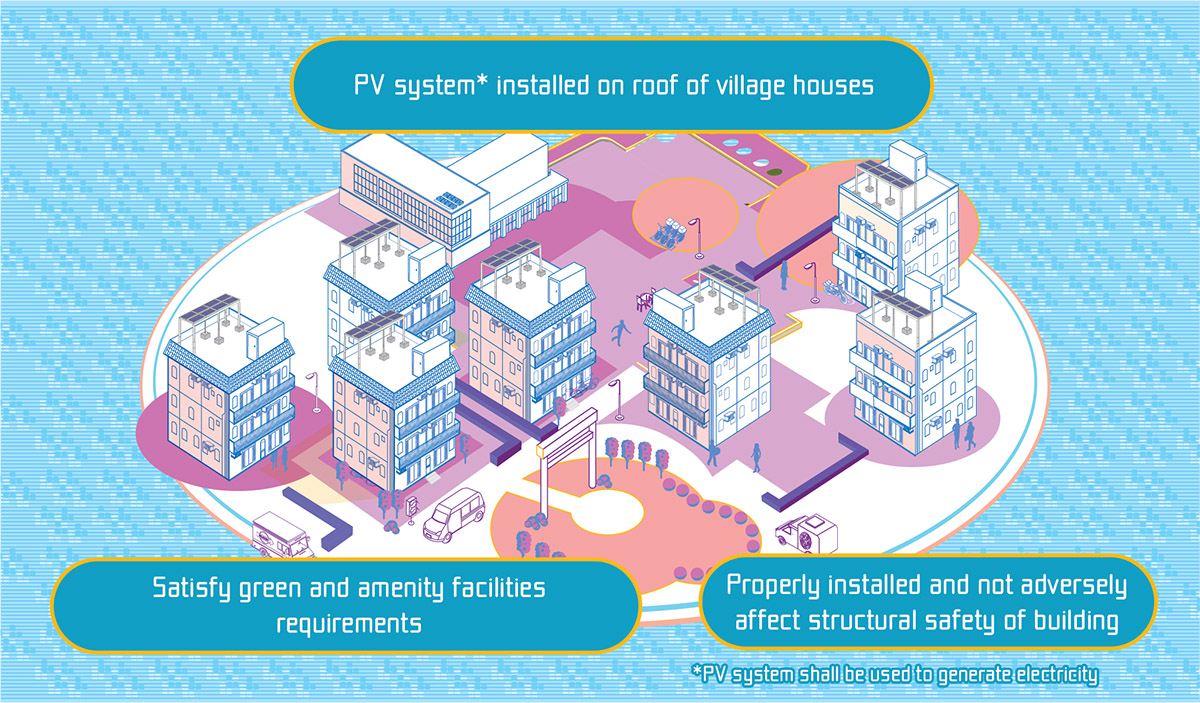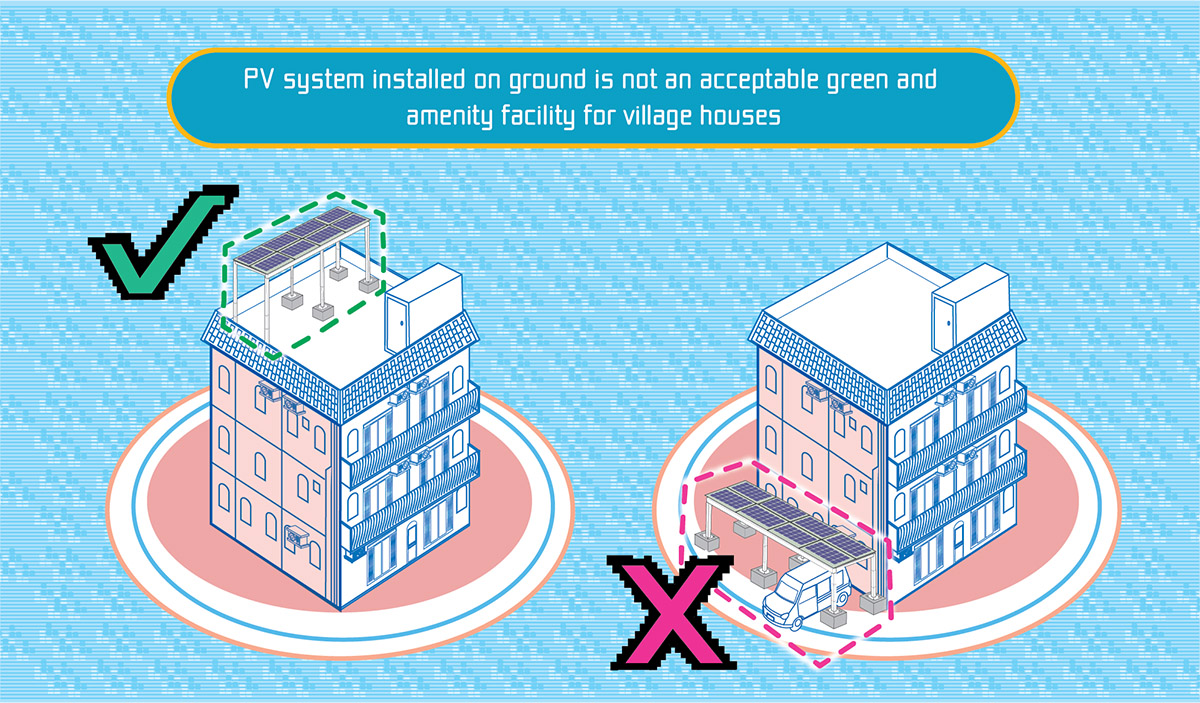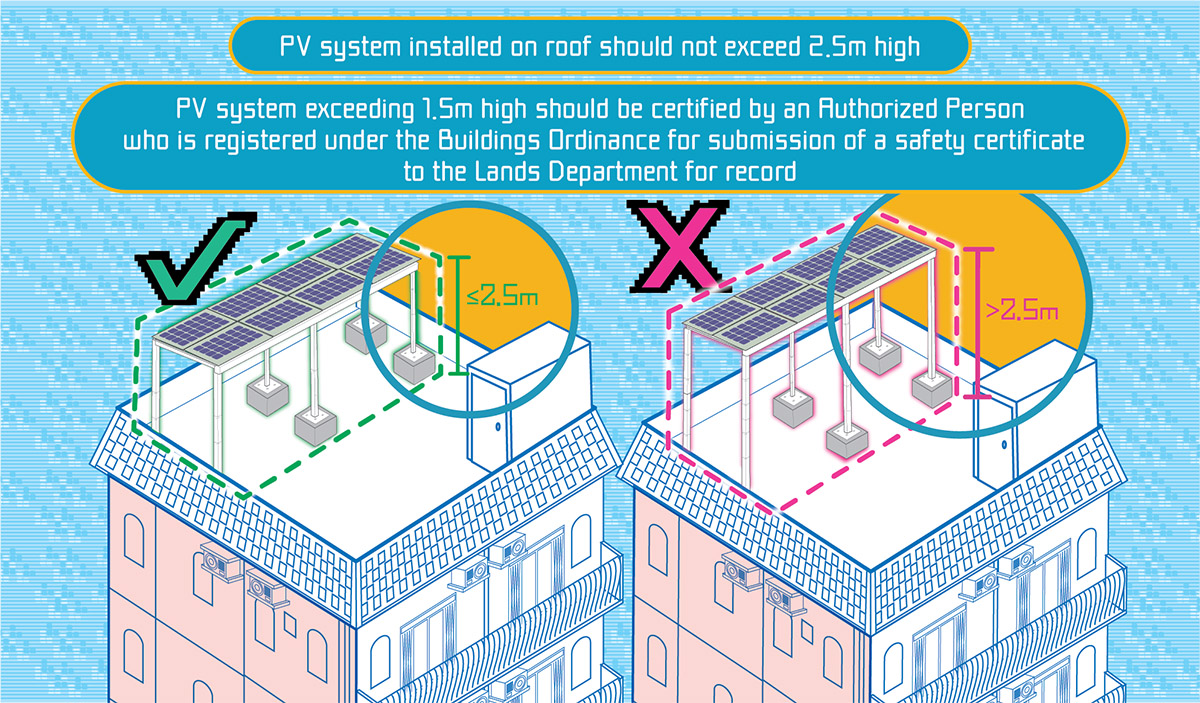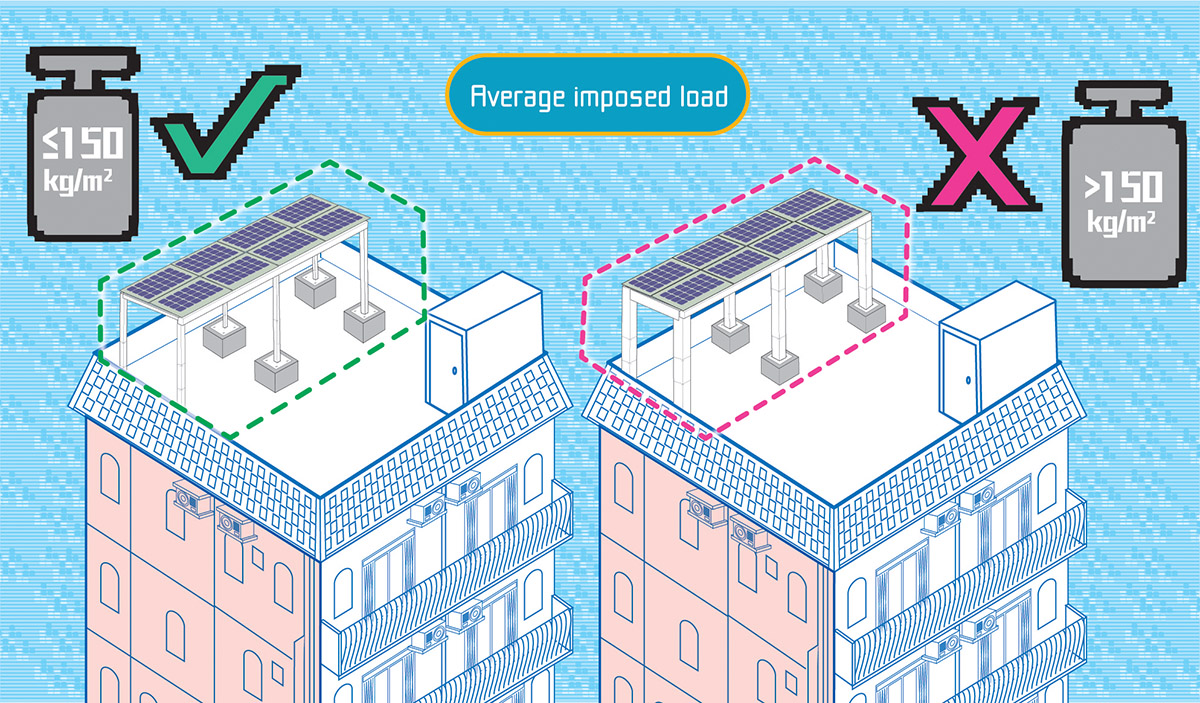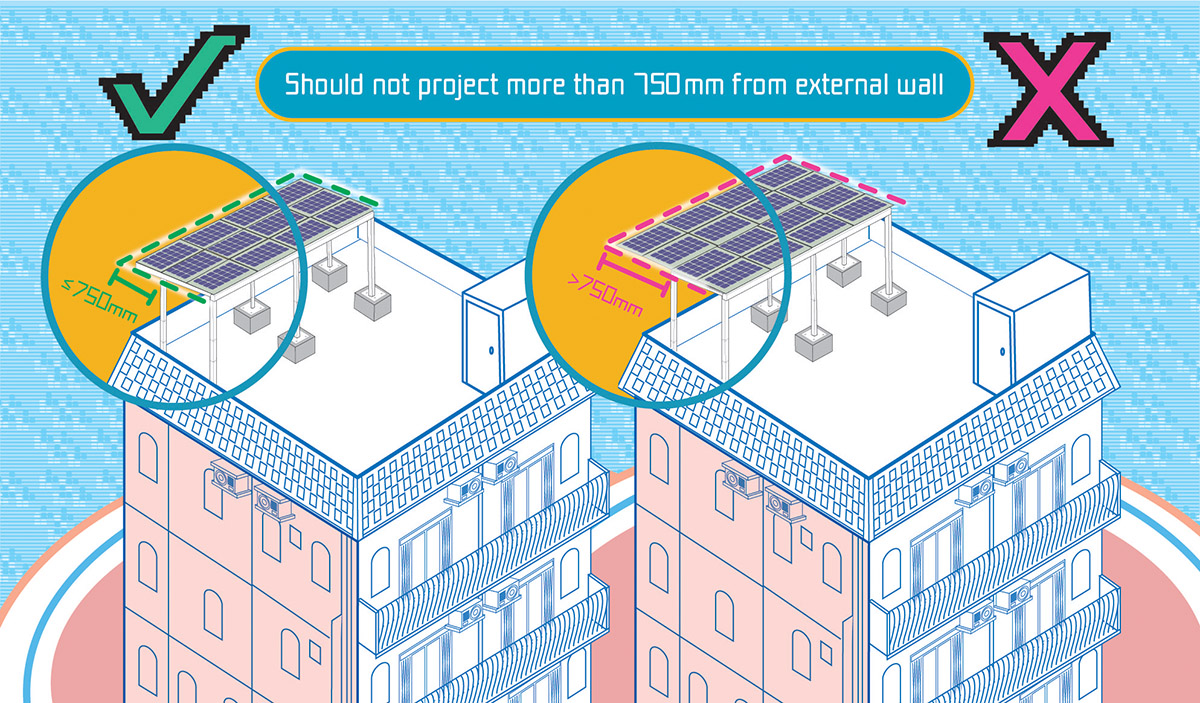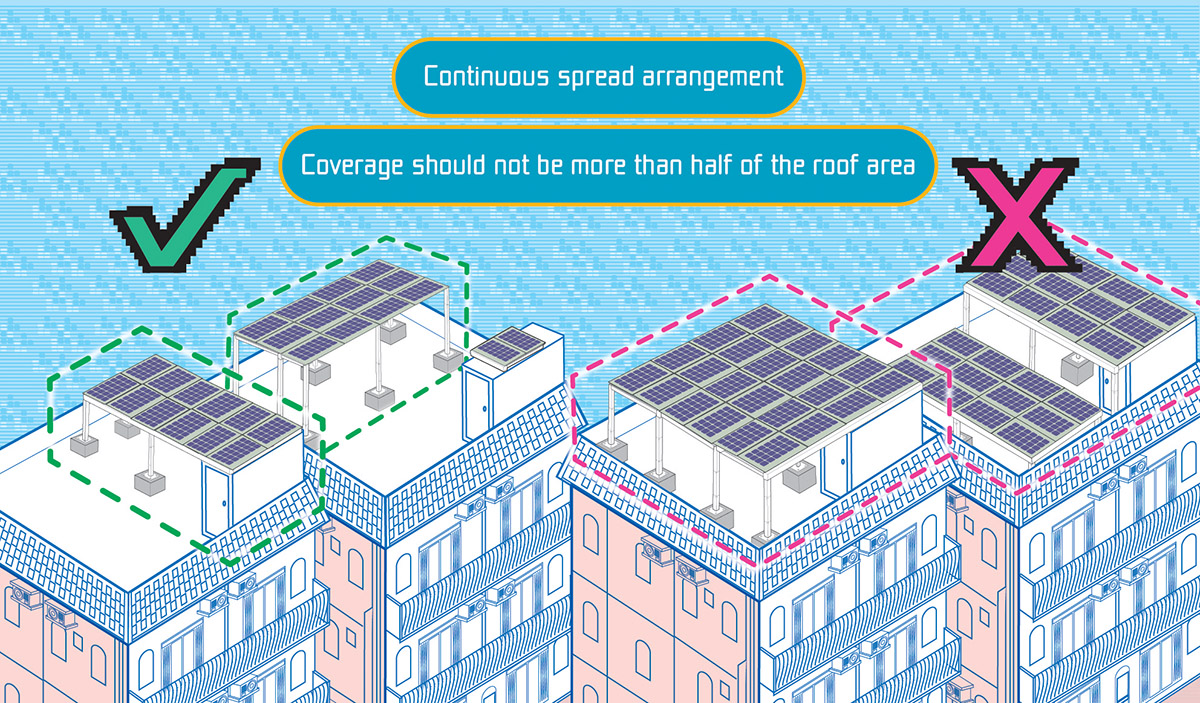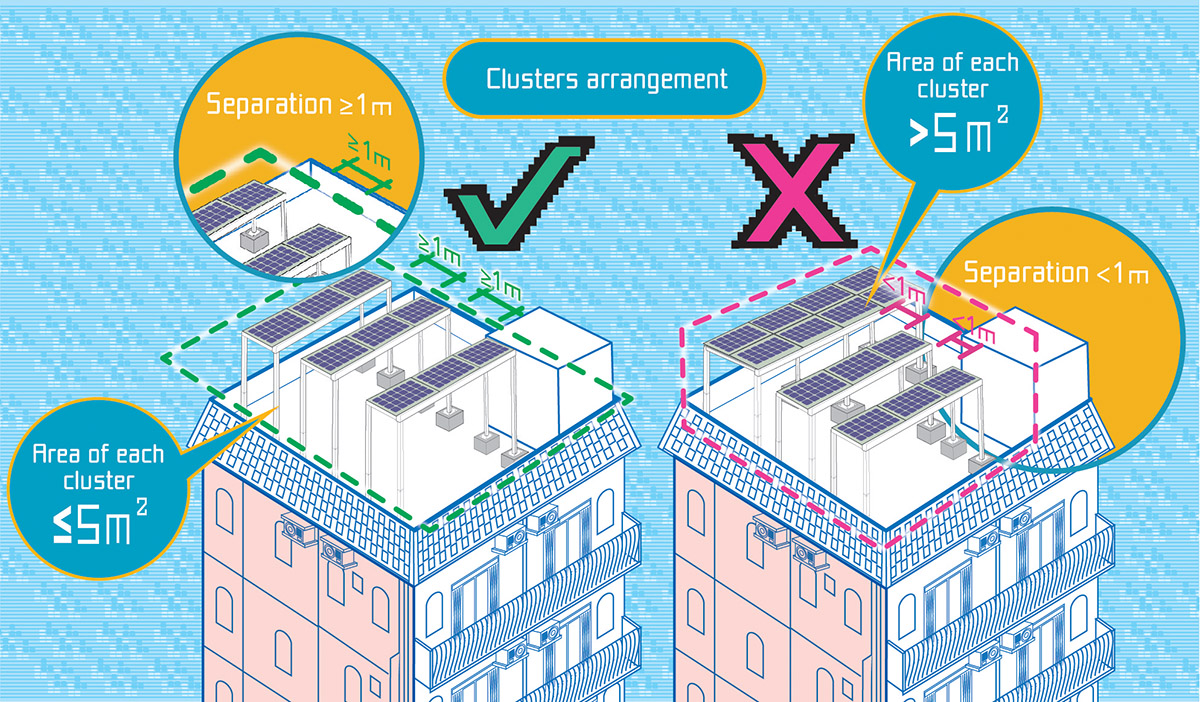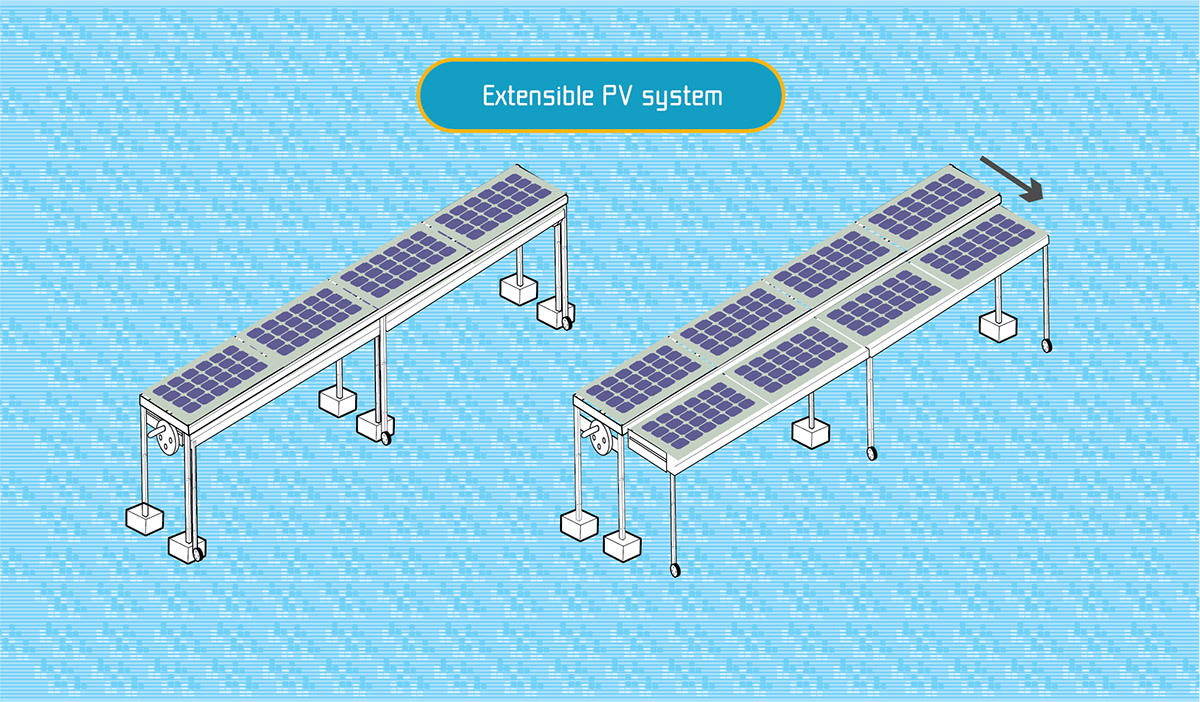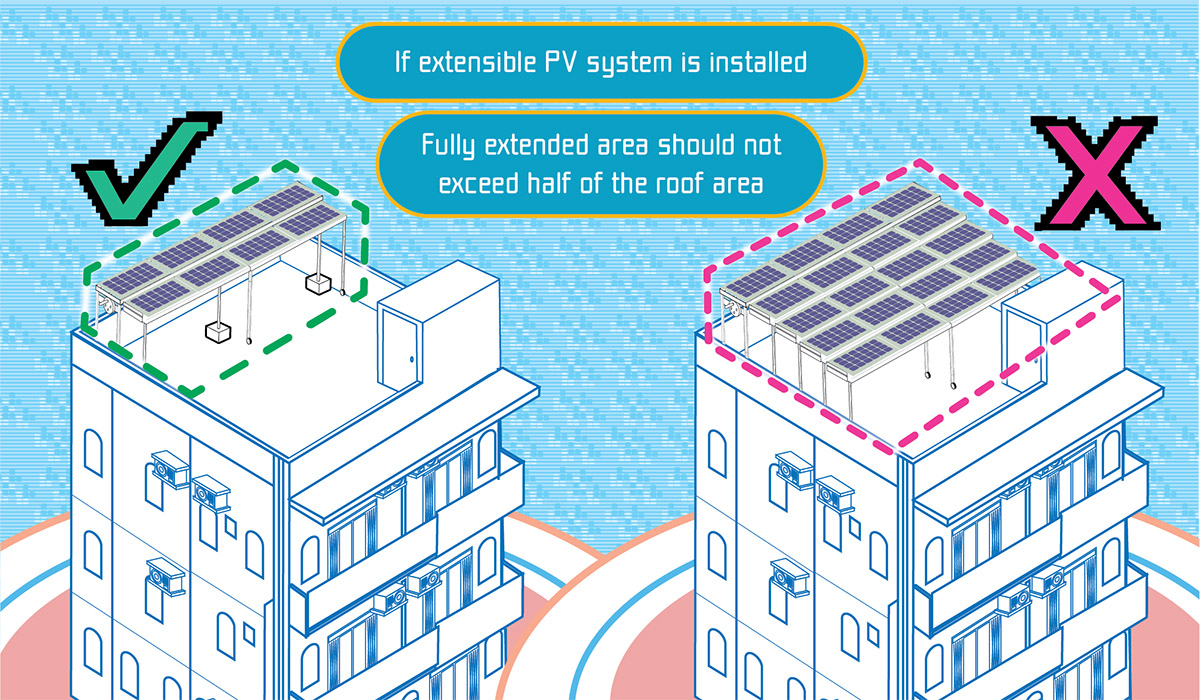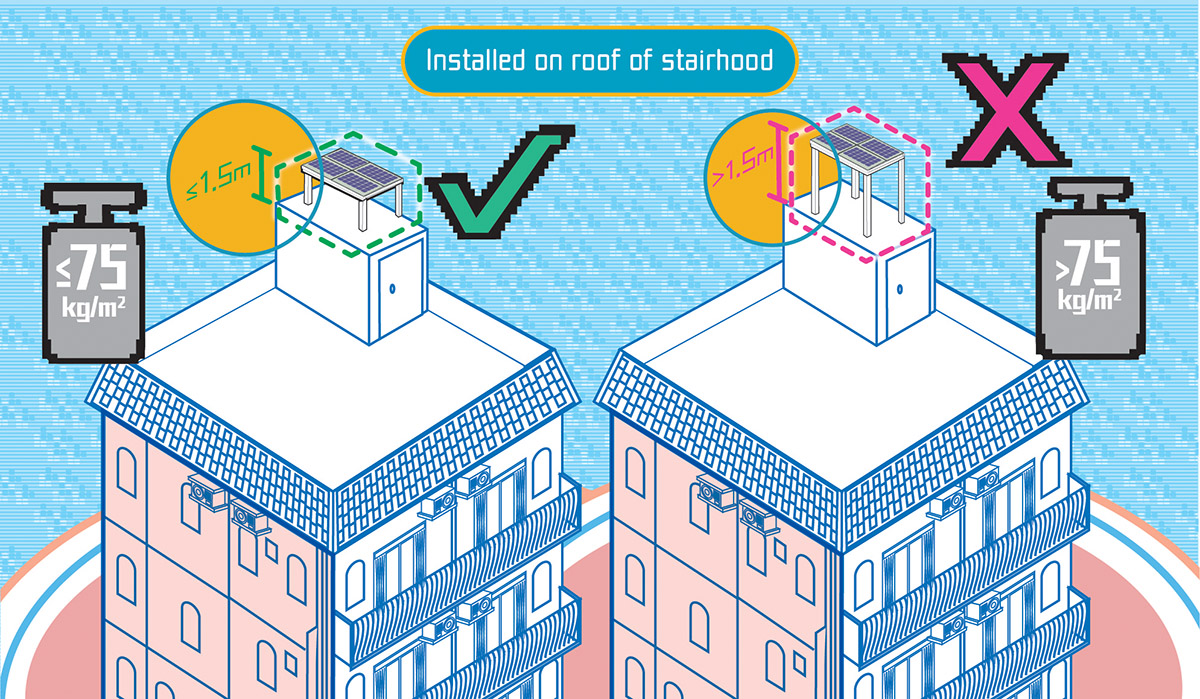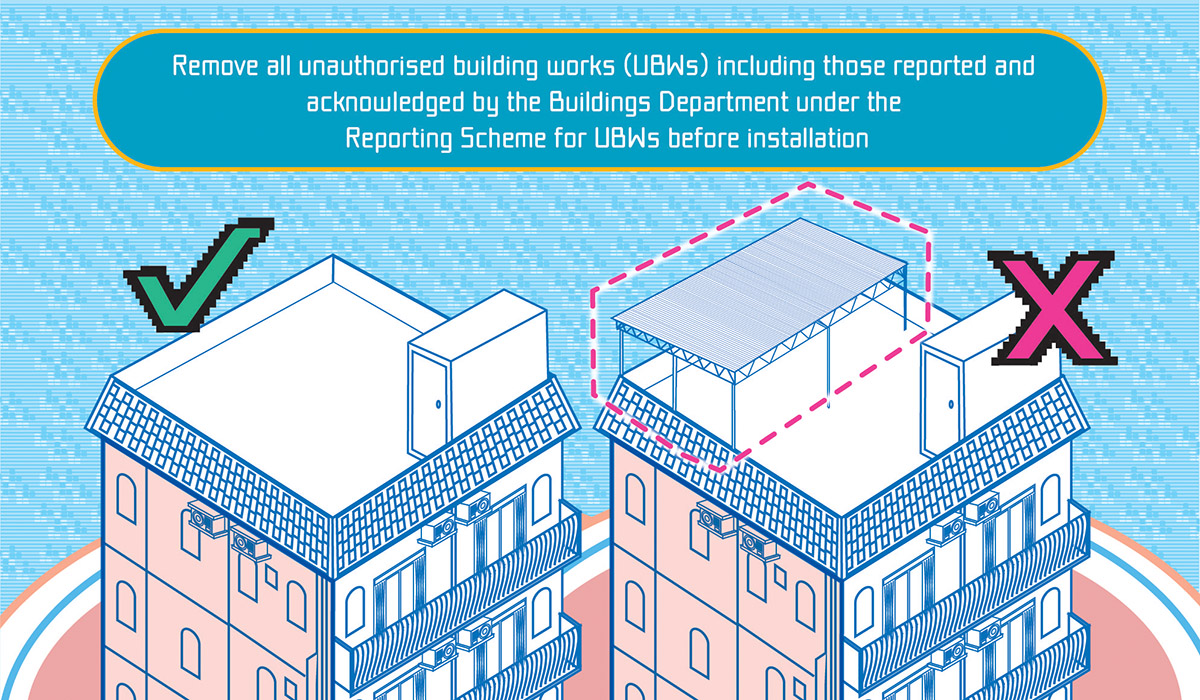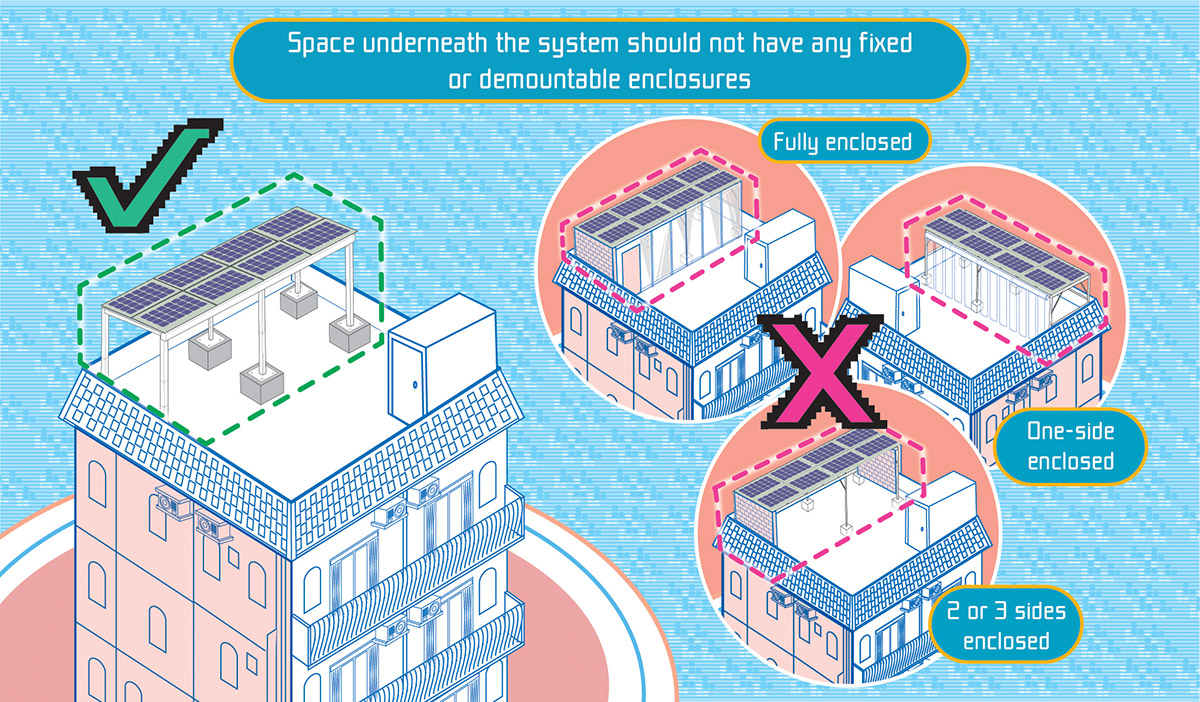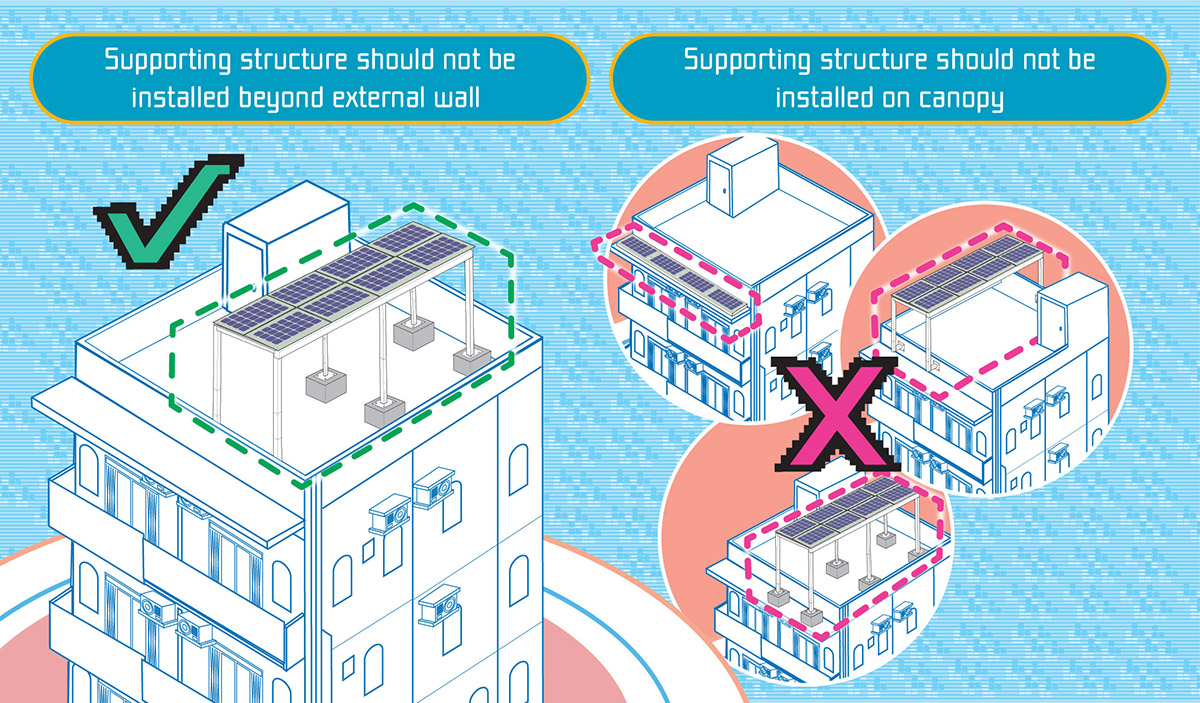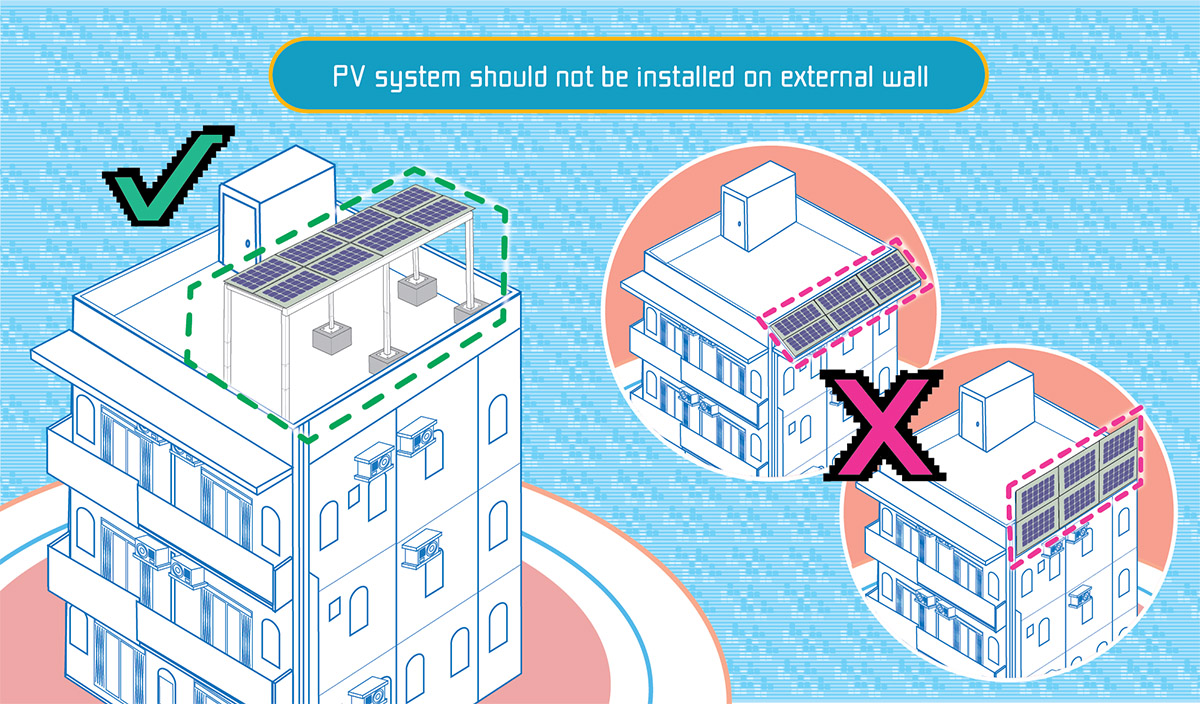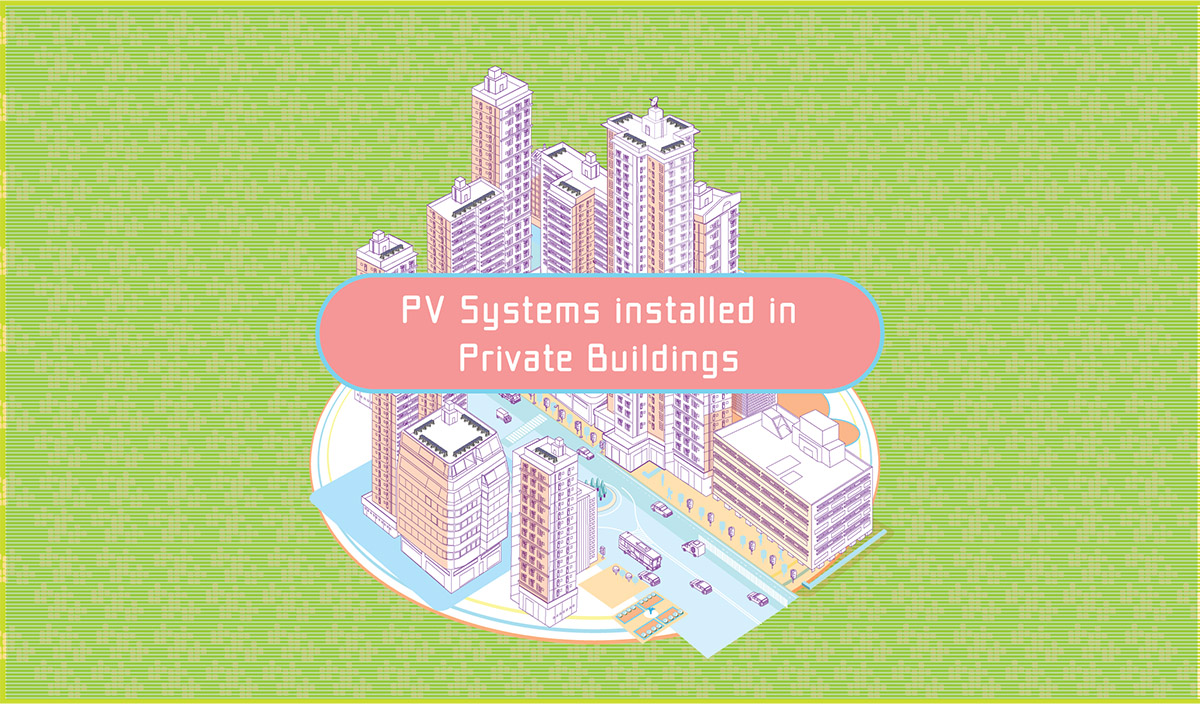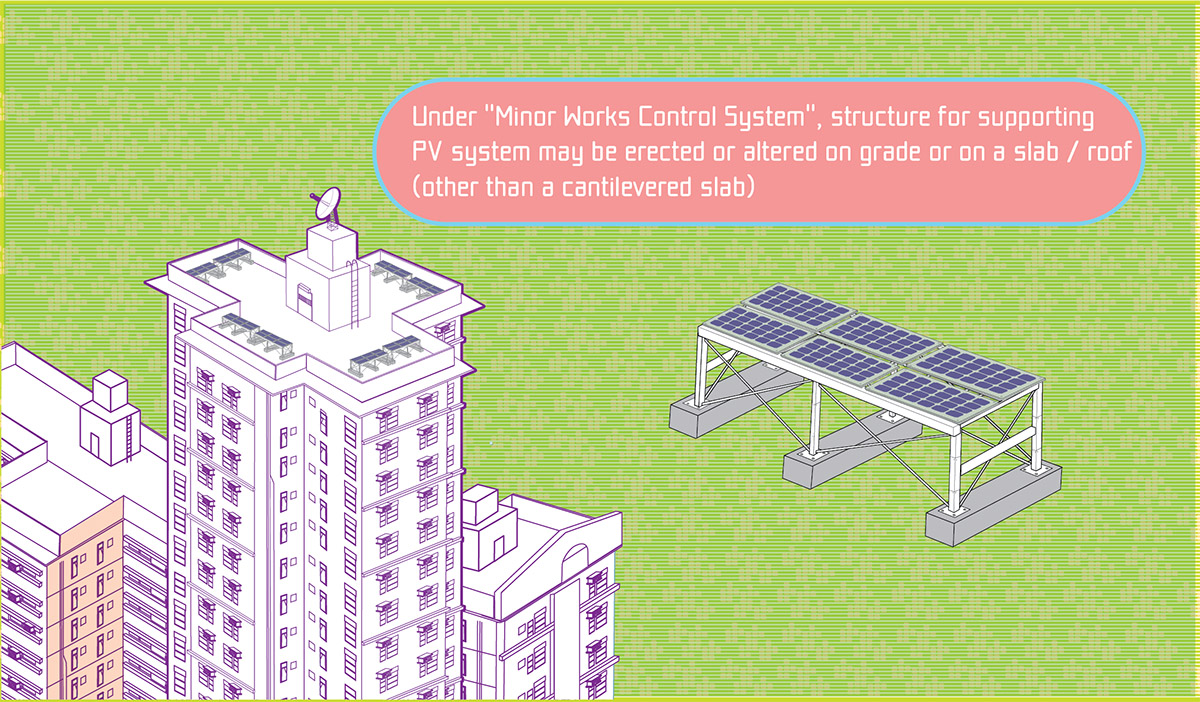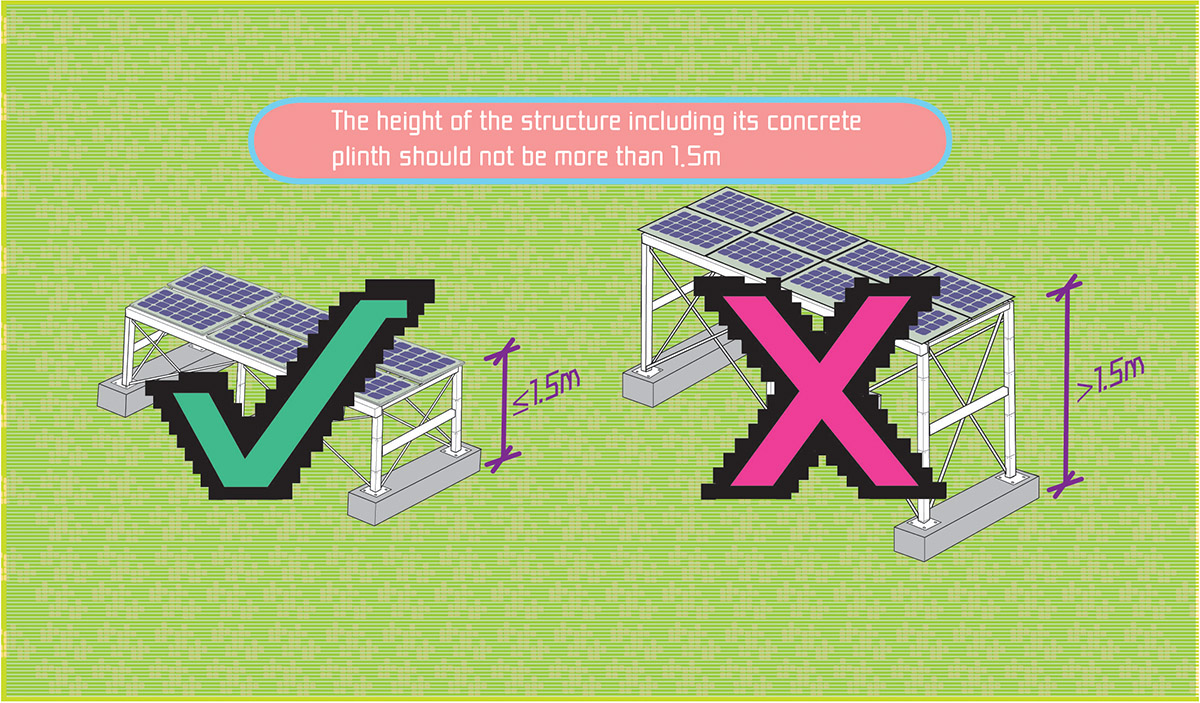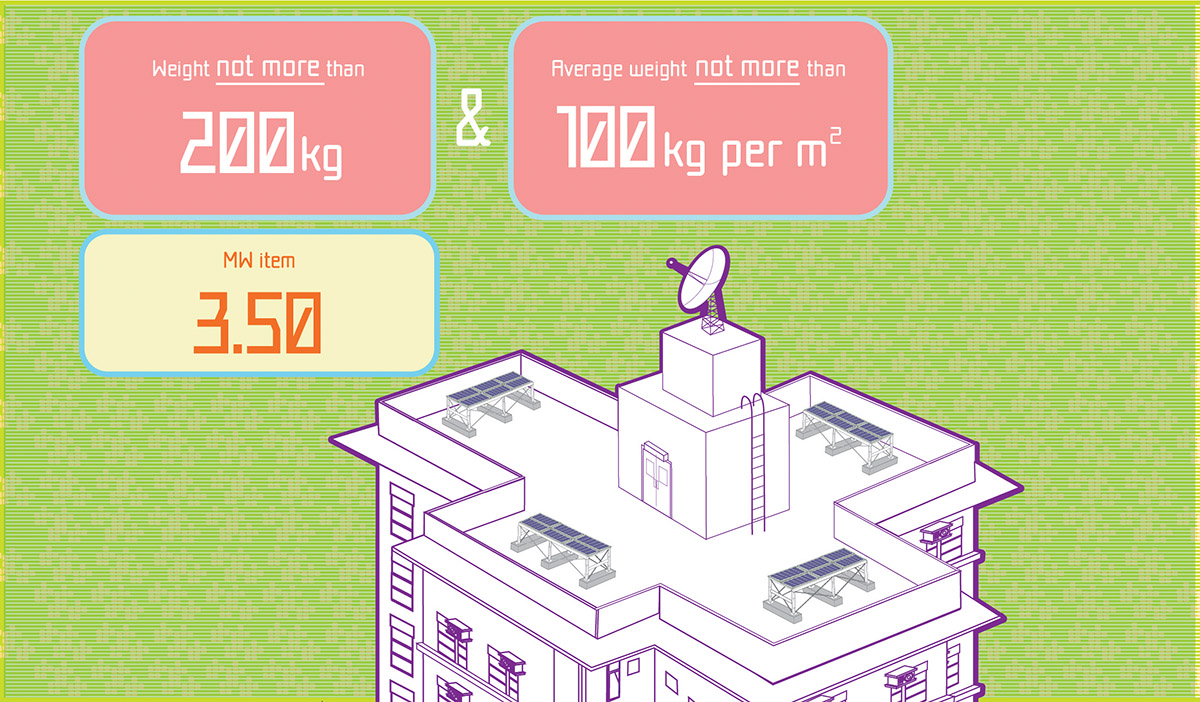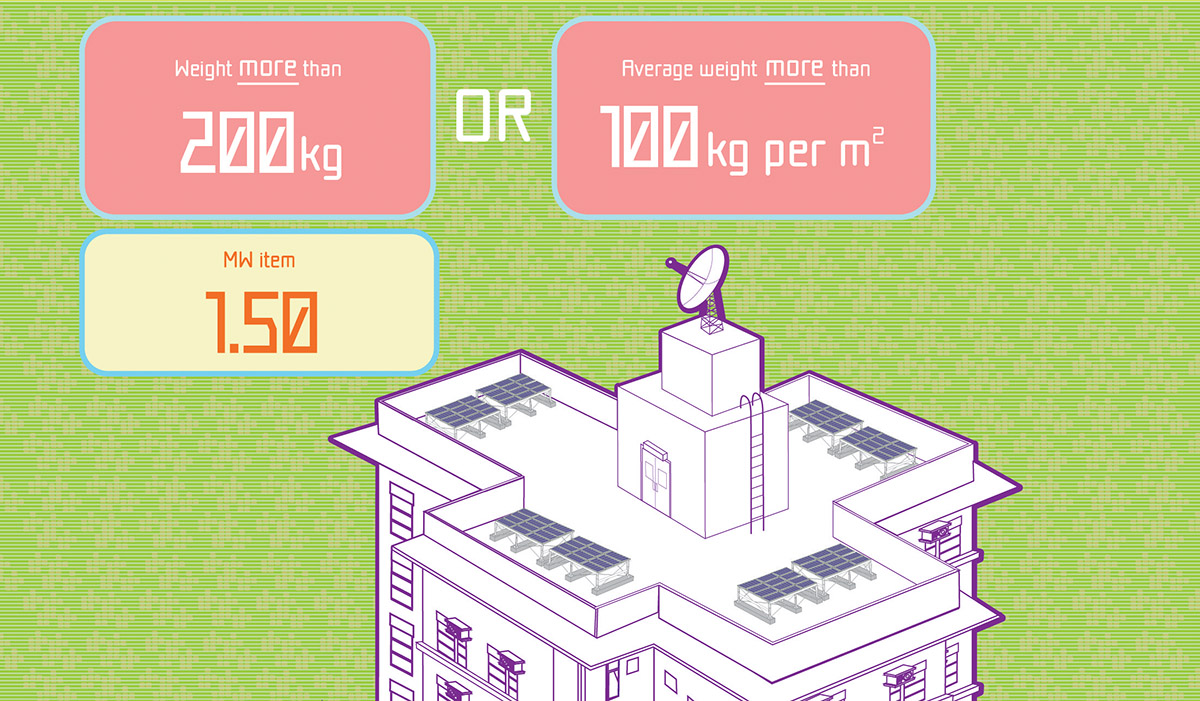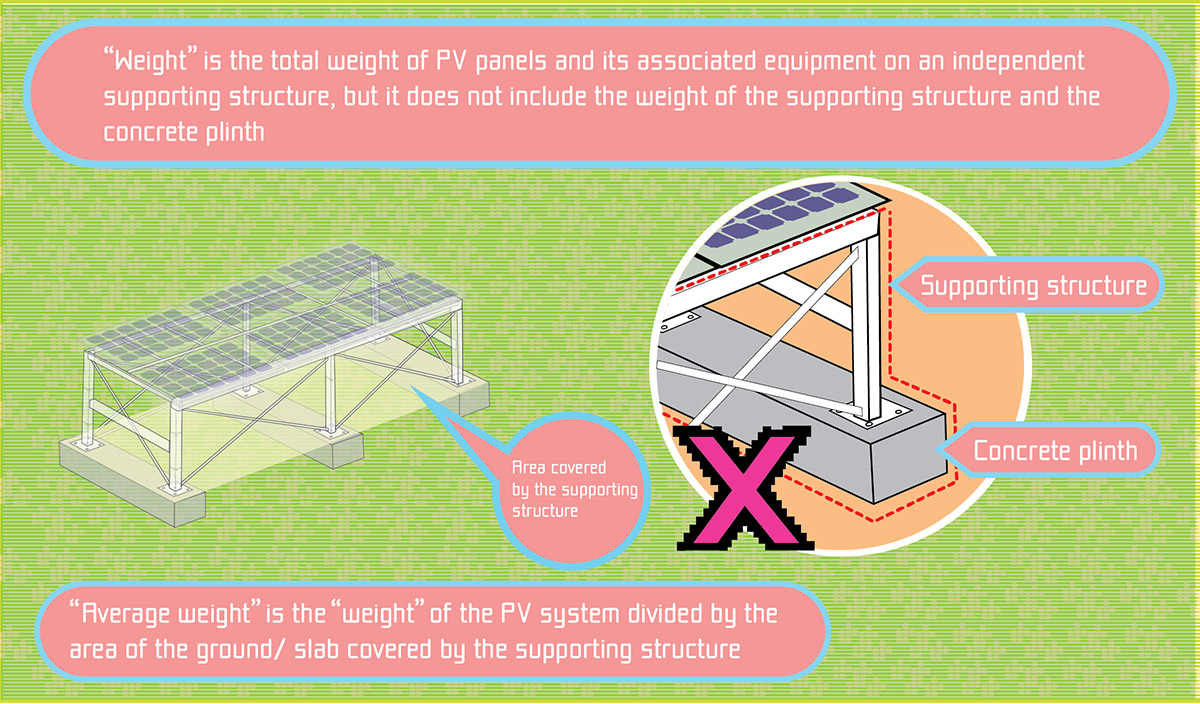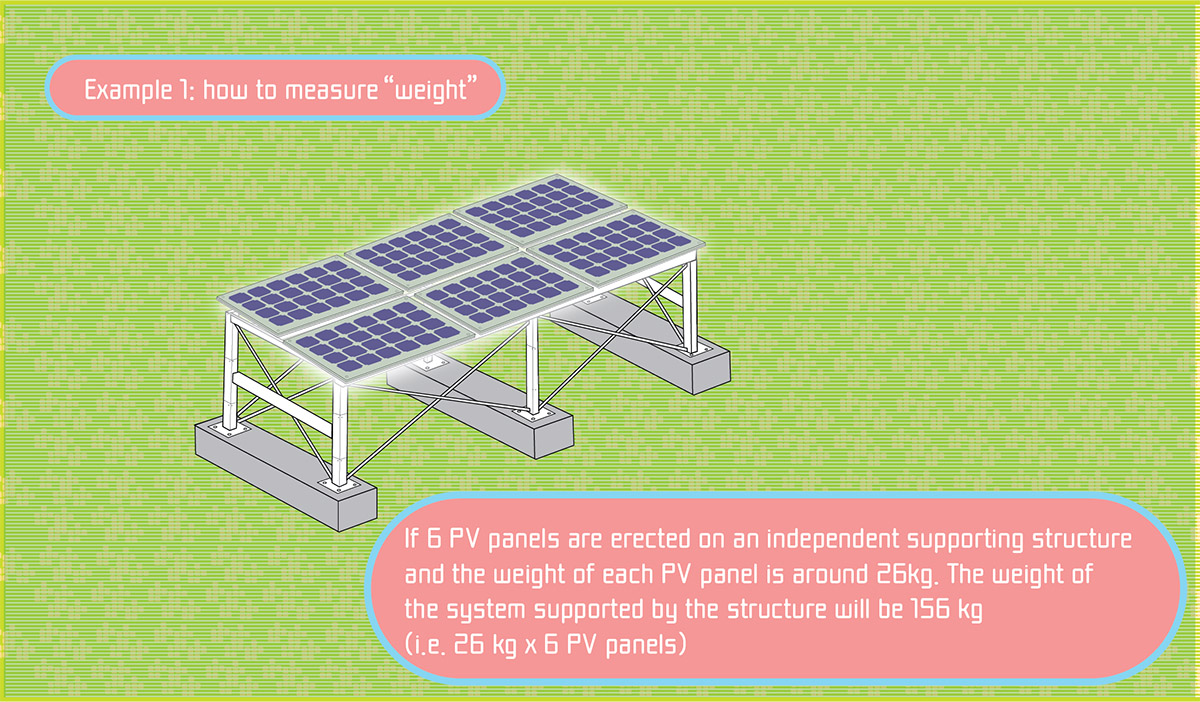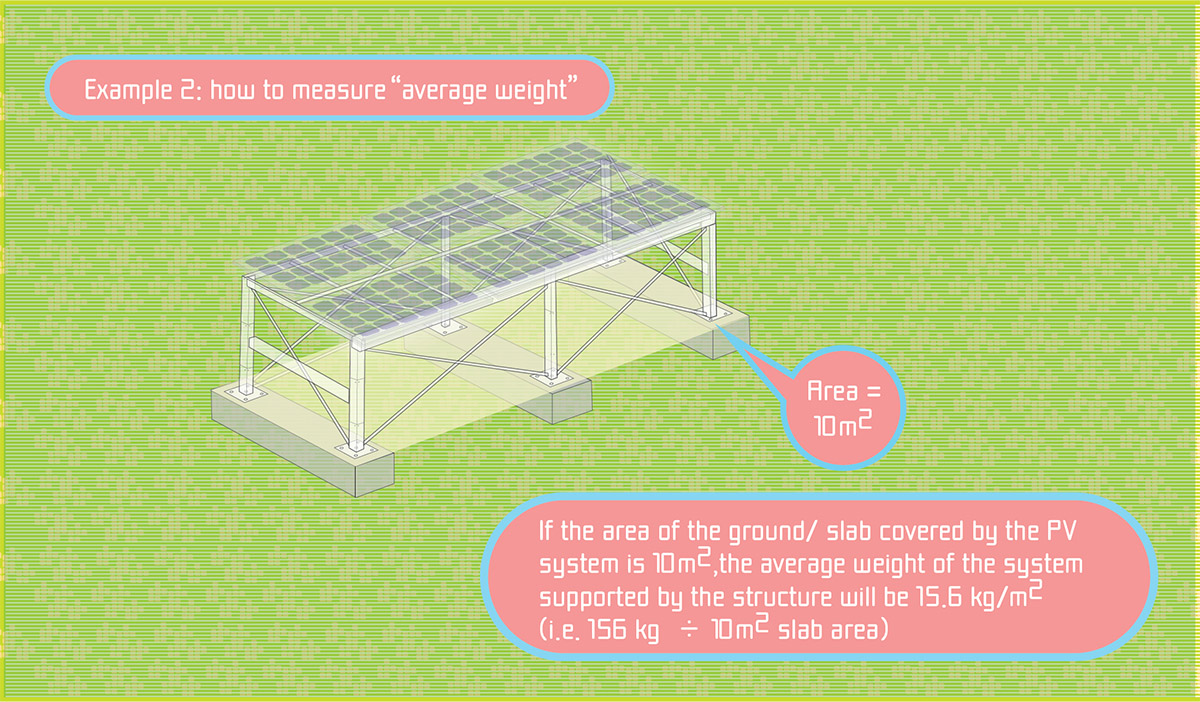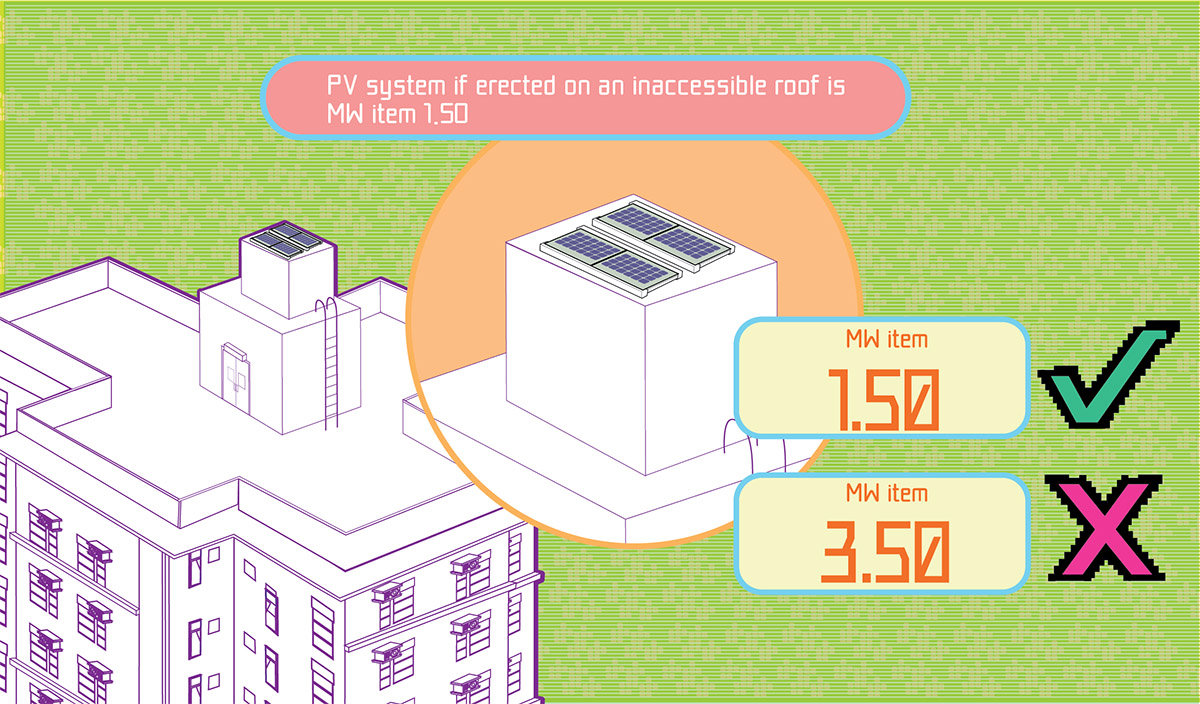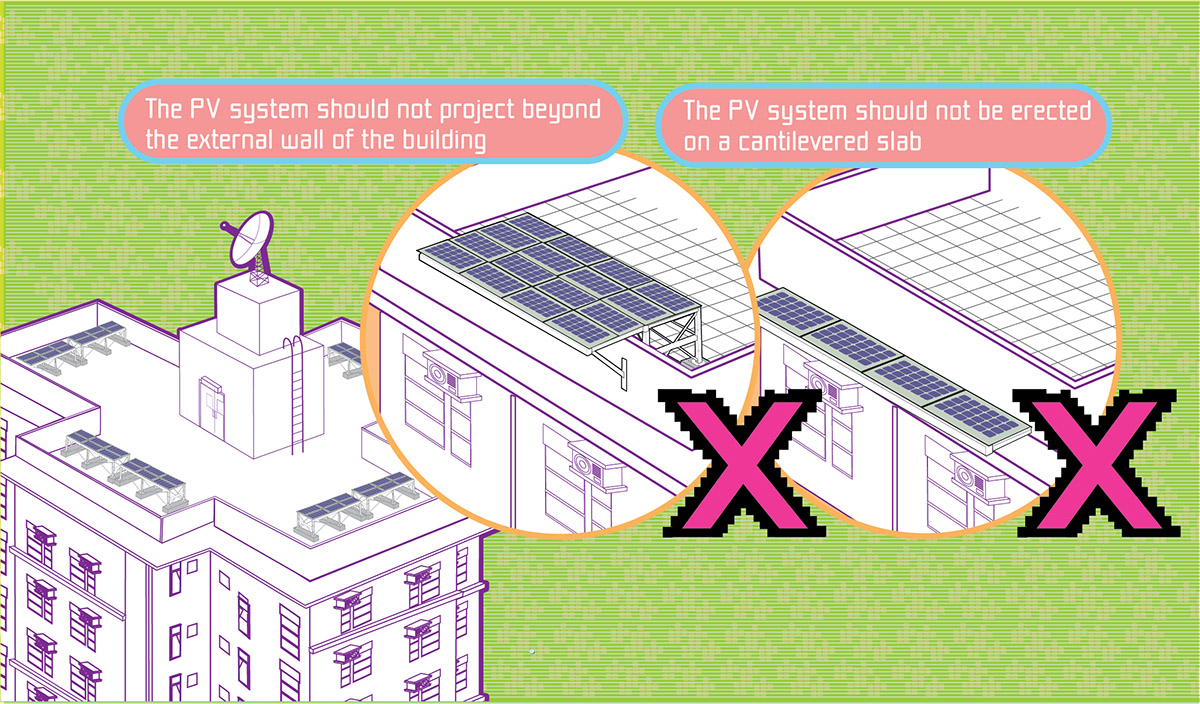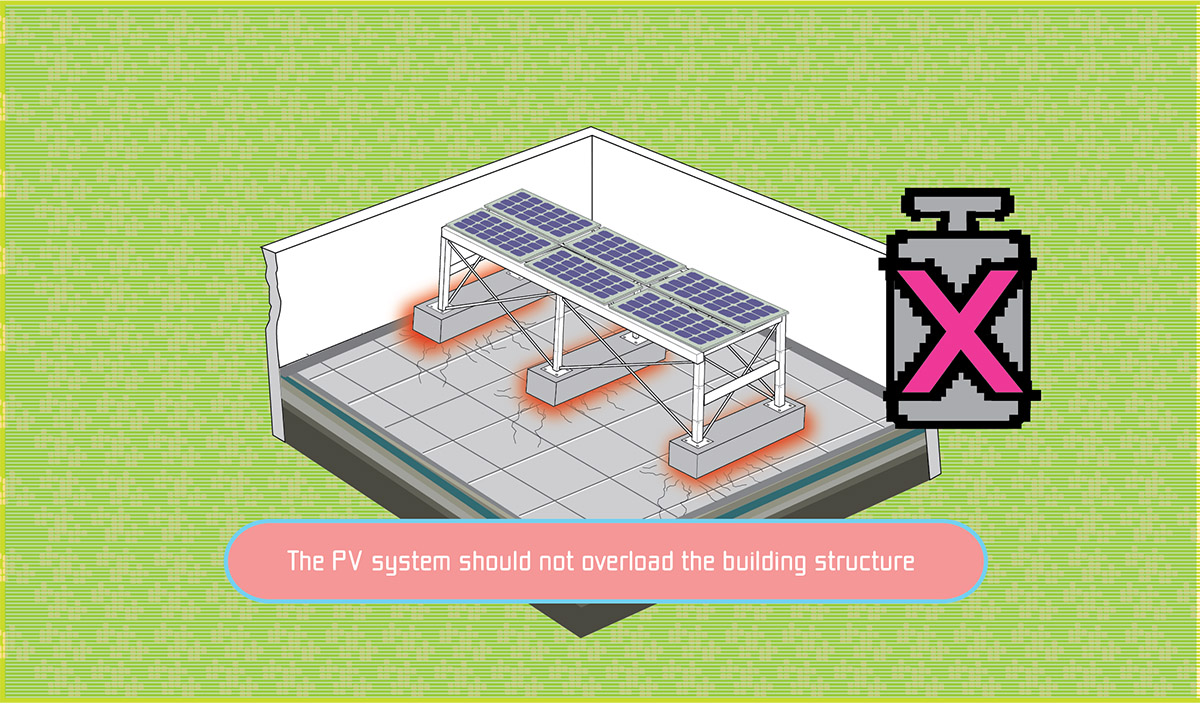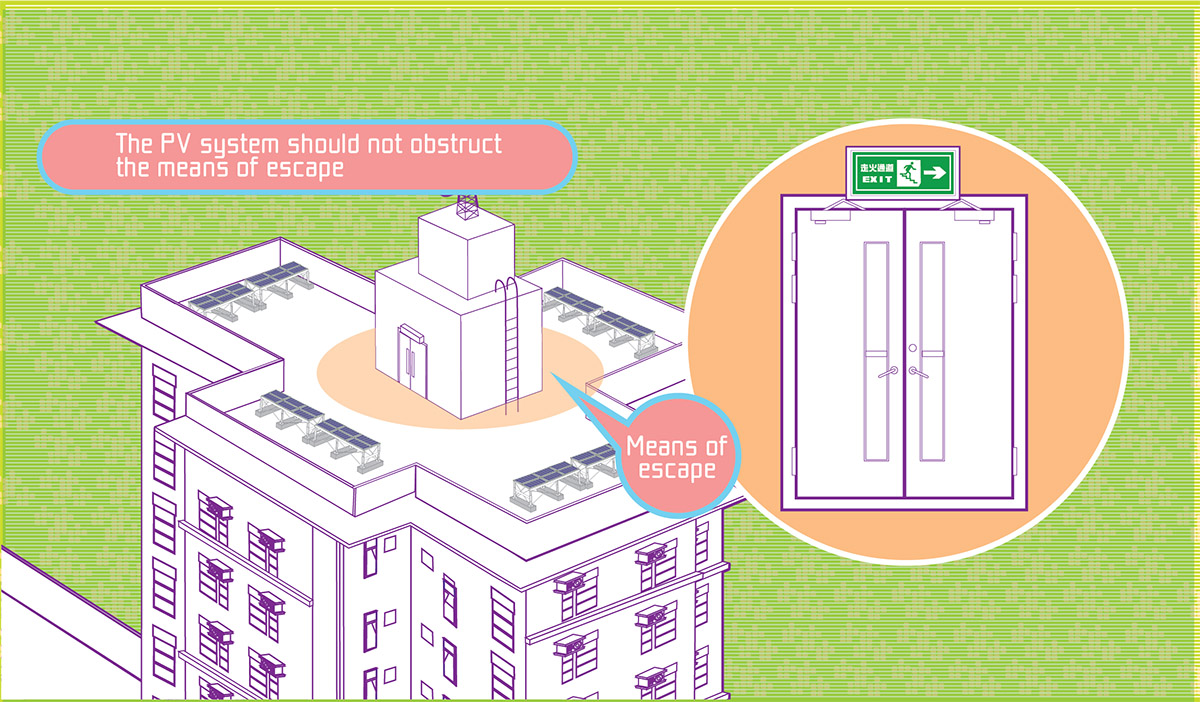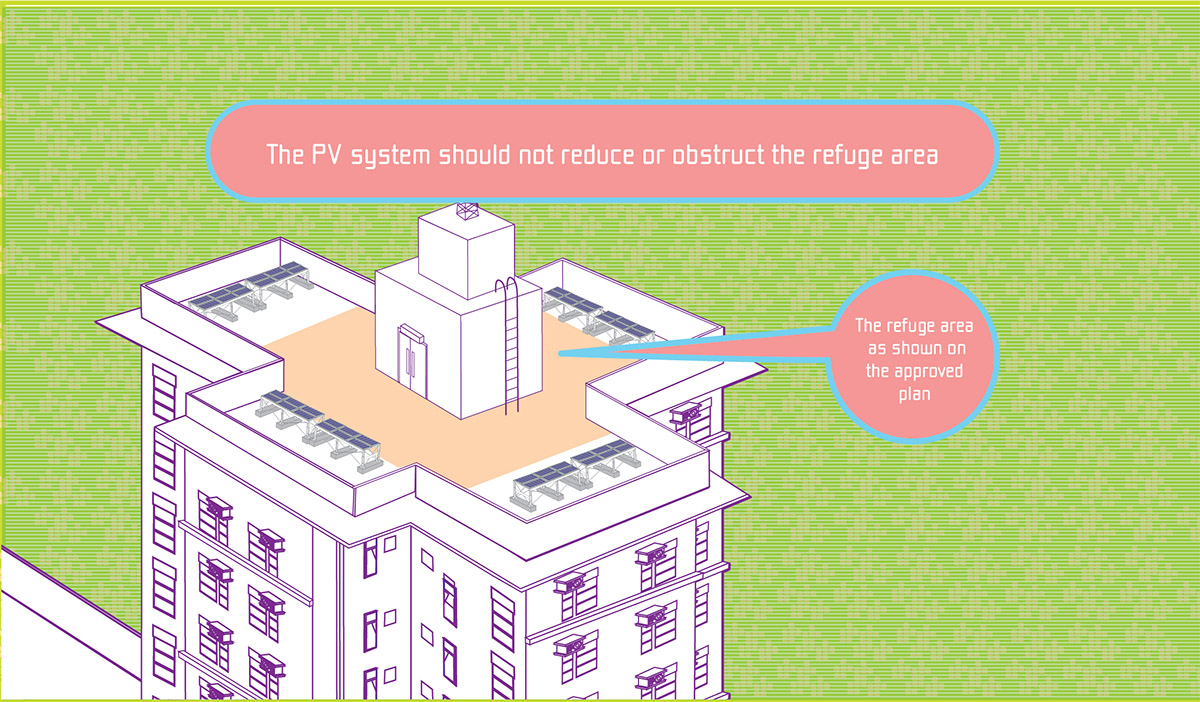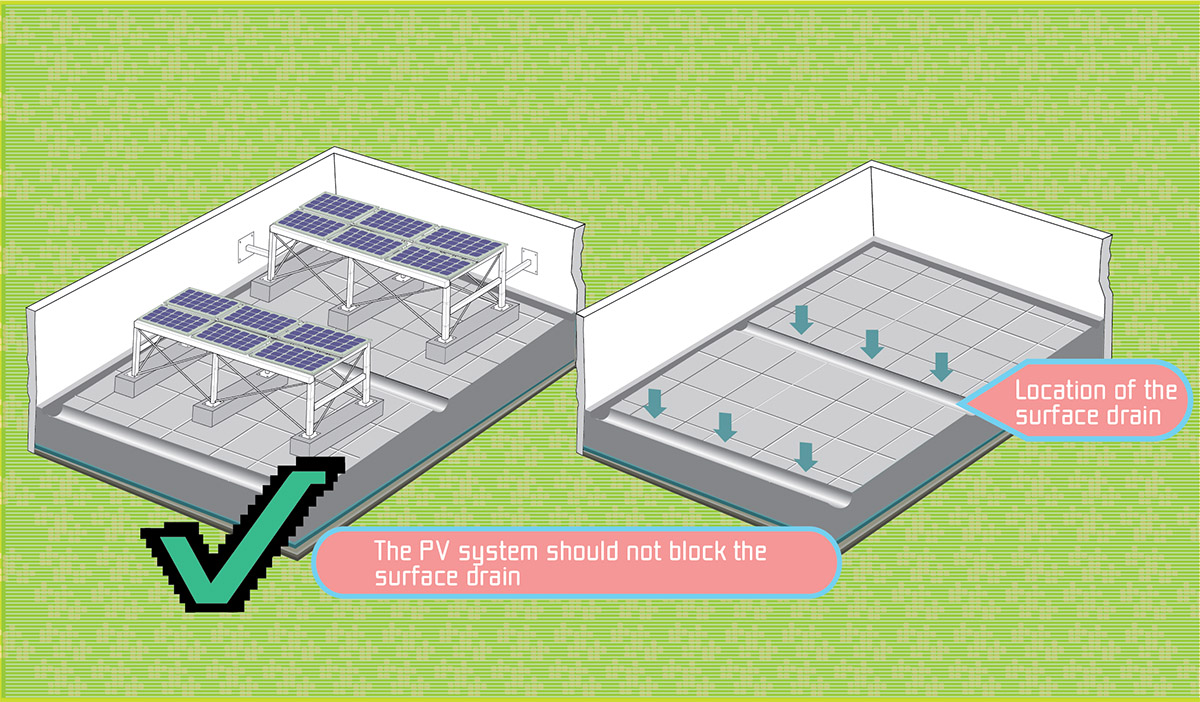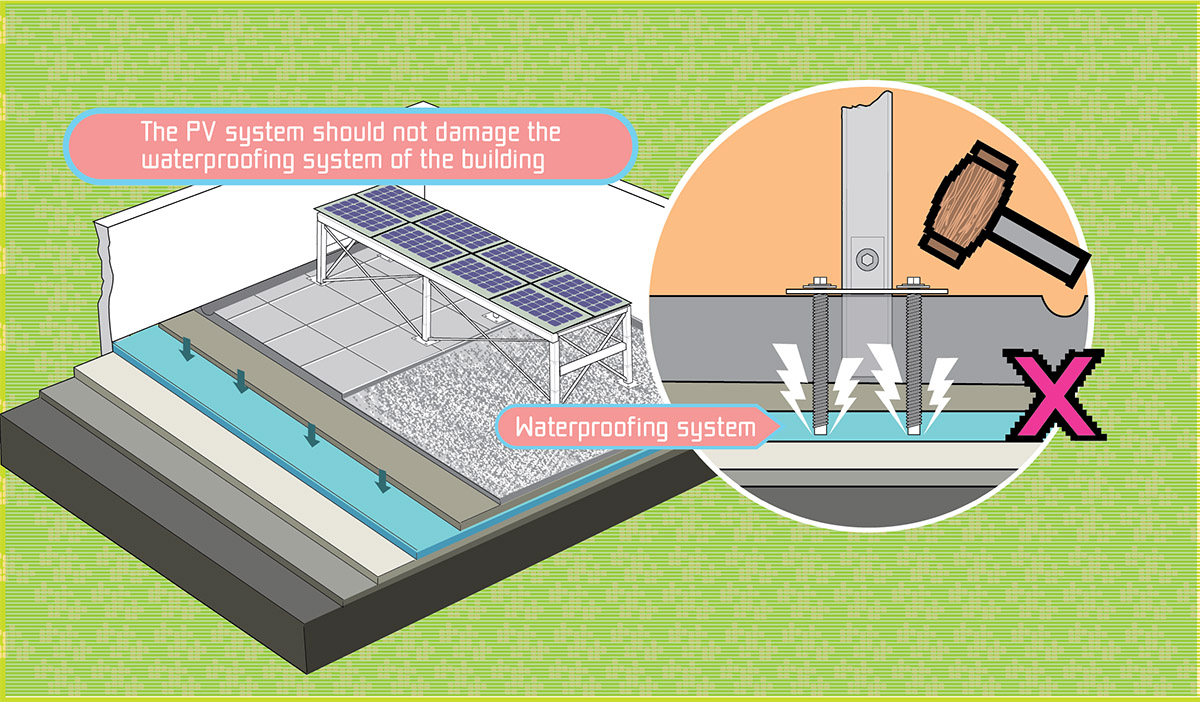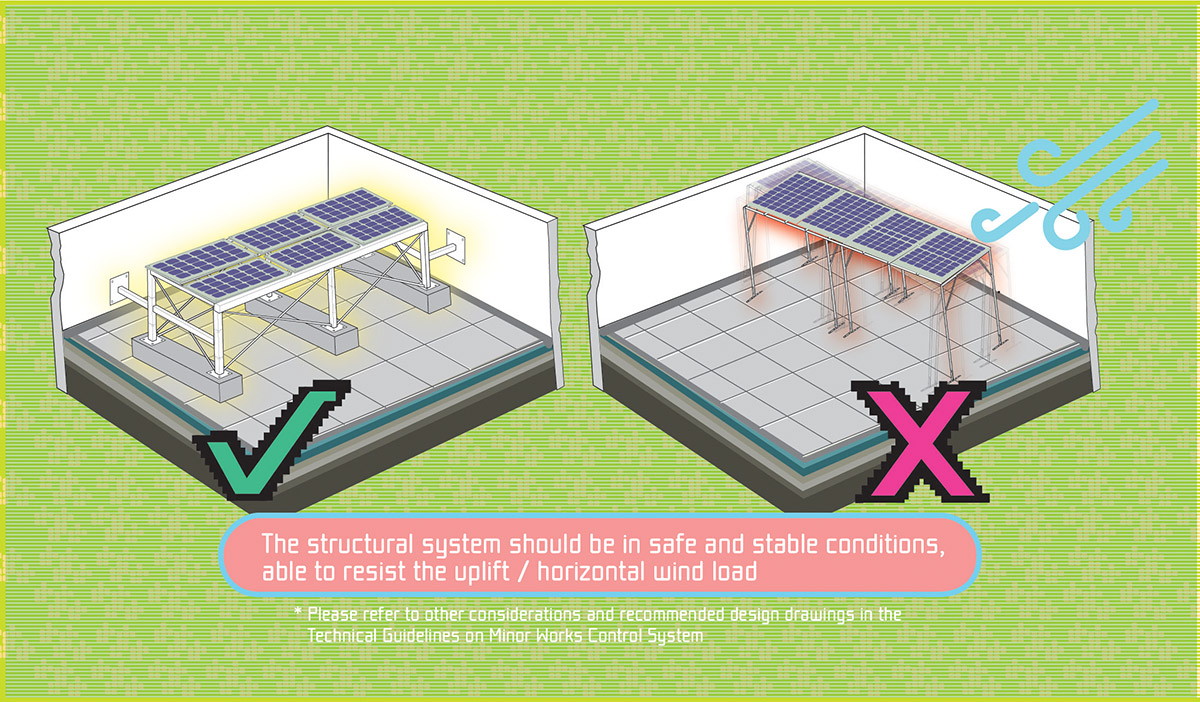Dos & Don't for installation of PV System
PV system installed on roof of village houses
Note on the regular annual inspection and maintenance for the PV system including its supporting structure:
Photovoltaic (PV) systems installed on roofs or roofs of stairhoods of village houses must comply with the specified requirements for green and amenity facilities and must be properly installed and not adversely affect the structural safety of the buildings. Owners of village houses should arrange regular annual inspections and routine maintenance for the PV systems including their supporting structures. Before the typhoon season, owners of village houses should make arrangement to ensure the PV systems and their supporting structures are in secure and safe conditions. After inclement weather, owners of village houses are advised to appoint competent persons to carry out inspections and the necessary repair works as soon as possible.
Only PV system installed on roof is an acceptable green and amenity facility for village house.
PV system installed on ground floor beside village house is not accepted as green and amenity facility for village houses.
PV system installed on roof should not exceed 2.5m high. PV system exceeding the height of 1.5m should be certified by an Authorized Person who is registered under the Buildings Ordinance for submission of a safety certificate to the Lands Department for record.
For PV system arranged in the form of continuous spread covering, its coverage should not be more than half of the roof area.
For PV system arranged in clusters, each cluster should have coverage of not more than 5m2 and should be separated from each other by at least 1m.
If extensible PV system is installed, its fully extended area should not exceed half of the roof area.
PV system installed on roof of stairhood should not exceed 1.5m high measured from the level of the roof of the stairhood. The average imposed load should not exceed 75kg/m2.
Before installation, all unauthorised building works (UBWs) should be removed including those reported and acknowledged by the Buildings Department under the Reporting Scheme for UBWs.
The roof on which PV system would be installed should not have any UBWs.
Supporting structure should only be installed within the roof.
Supporting structure should not be installed beyond external wall or installed on canopy.
Related information
PV Systems installed in Private Buildings
Note on the regular annual inspection and maintenance for the PV system including its supporting structure:
Owners and/or property management companies should refer to the Handbook on Design, Operation and Maintenance of Solar Photovoltaic Systems published by the Electrical and Mechanical Services Department and arrange regular annual inspections and routine maintenance for the PV systems including their supporting structures. Before the typhoon season, addition preventive measure, such as the installation of tie wires, should also be considered to ensure the PV systems and their supporting structures are secured and safe. After typhoon, owners and/or property management companies should arrange the carrying out of inspections and repair works (if necessary) as soon as possible.
Under "Minor Works Control System", structure for supporting PV system may be erected or altered on grade or on a slab/roof (other than a cantilevered slab).
The height of the structure including its concrete plinth should not be more than 1.5m.
[In cases where the structure exceeds 1.5 metres in height, the owner shall appoint an authorized person and (if required) a registered structural engineer to submit plans to the Buildings Department (BD) and the works could only be commenced upon obtaining BD's approval and consent.]
If the weight is not more than 200kg and the average weight is not more than 100kg/m2, the works may be MW item 3.50.
If the weight is more than 200kg or the average weight is more than 100 kg/m2, the works may be MW item 1.50.
"Weight" is the total weight of PV panels and its associated equipment on an independent supporting structure, but it does not include the weight of the supporting structure and the concrete plinth.
"Average weight" is the "weight" of the PV system divided by the area of the ground/slab covered by the supporting structure.
Example 1: how to measure "weight"
If 6 PV panels are erected on an independent supporting structure and the weight of each PV panel is around 26kg. The weight of the system supported by the structure will be 156kg (i.e. 26kg × 6 PV panels).
Example 2: how to measure "average weight"
If the area of the ground/slab covered by the PV system is 10m2, the average weight of the system supported by the structure will be 15.6kg/m2 (i.e. 156kg ÷ 10m2 slab area).
The PV system should not project beyond the external wall of the building or be erected on a cantilevered slab.

